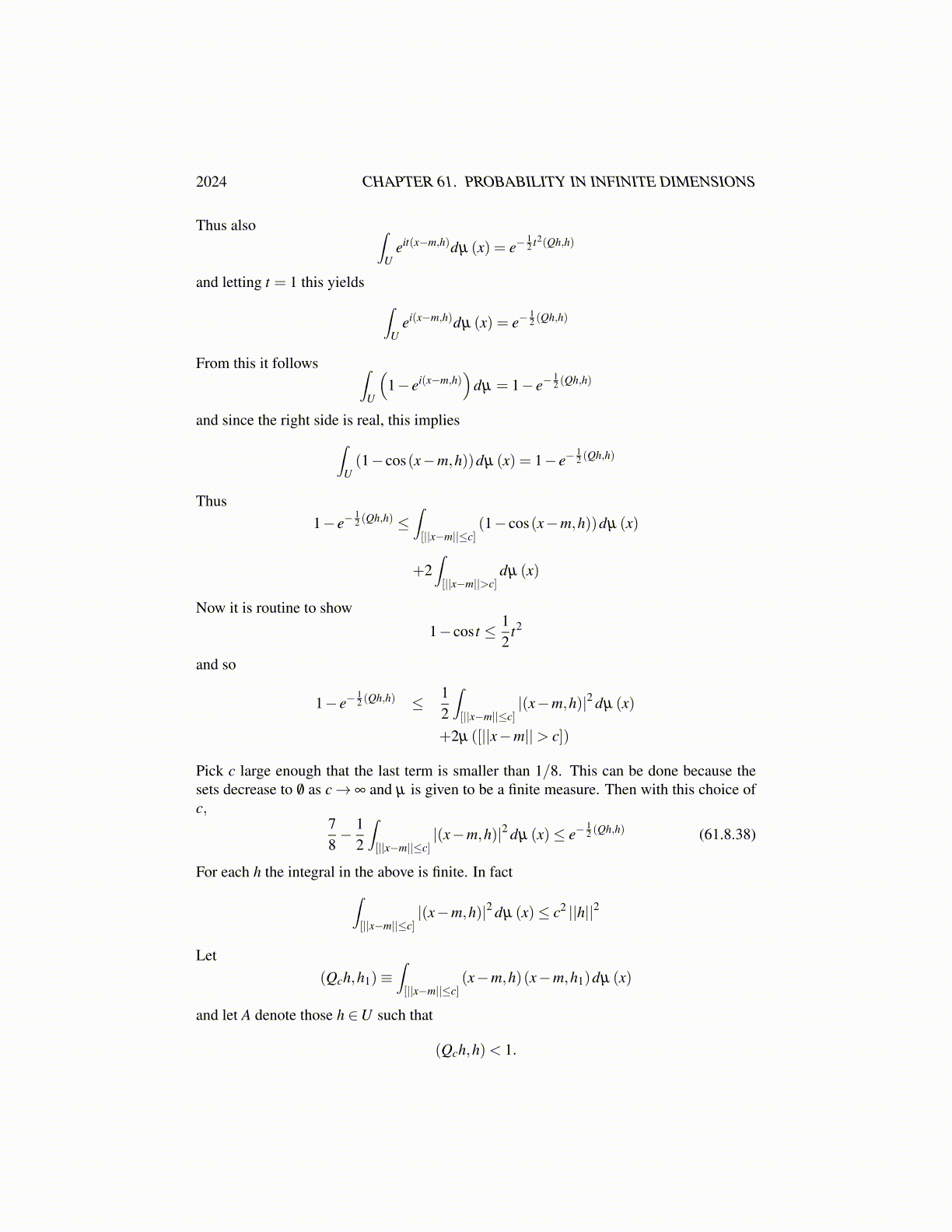
2024 CHAPTER 61. PROBABILITY IN INFINITE DIMENSIONS
This proves the lemma.Now continue with the proof of the theorem. I need to identify m and Q. It is assumed
µ is Gaussian. Recall this means h′ is normally distributed for each h ∈U . Then using
|x| ≤ |x−m(h)|+ |m(h)|∫U|(x,h)U |dµ (x) =
∫R|x|dλ h′ (x)
=1√
2πσ2 (h)
∫R|x|e−
12σ2 (x−m(h))2
dx
≤ 1√2πσ2 (h)
∫R|x−m(h)|e−
12σ2 (x−m(h))2
dx
+ |m(h)|
Then using the Cauchy Schwarz inequality, with respect to the probability measure
1√2πσ2 (h)
e−1
2σ2 (x−m(h))2dx,
≤ 1√2πσ2 (h)
(∫R|x−m(h)|2 e−
12σ2 (x−m(h))2
dx)1/2
+ |m(h)|< ∞
Thus by Lemma 61.8.6
h→∫
U(x,h)dµ (x)
is a continuous linear transformation and so by the Riesz representation theorem, thereexists a unique m ∈U such that
(h,m)U =∫
U(h,x)dµ (x)
Also the above says (h,m) is the mean of the random variable x→ (x,h) so in the above,
m(h) = (h,m)U .
Next it is necessary to find Q. To do this let Q be given by 61.8.34. Thus
(Qh,g) ≡∫
U((x,h)− (m,h))((x,g)− (m,g))dµ (x)
=∫
U(x−m,h)(x−m,g)dµ (x)
It is clear Q is linear and the above is a bilinear form (The integral makes sense because ofthe assumption that h′,g′ are normally distributed.) but is it continuous? Does (Qh,h) =σ2 (h)?